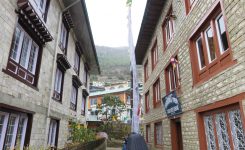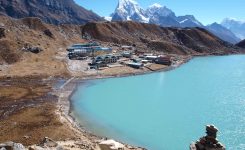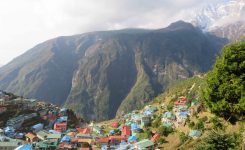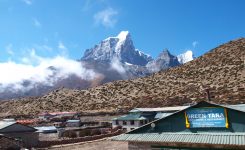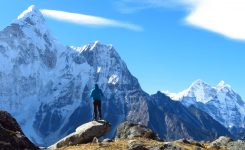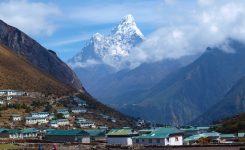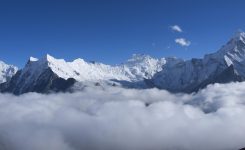Guide, Travel
Altitude Sickness 101
In this article, you will find generation information about Altitude
Altitude Sickness or Acute Mountain Sickness (AMS) is what every trekker should be wary of when trekking at high altitudes. Prior to departing for the Three Passes Trek and to the Everest Base Camp trek I have read a lot (like a lot) of blogs from other solo trekkers about their experience and online medical sources on Acute Mountain Sickness, however I didn’t find any information on how exactly do you recognize when you have a mild AMS like a slight headache, lack of appetite, etc. or when your pulsating headache should be monitored closely and is an alarming sign.
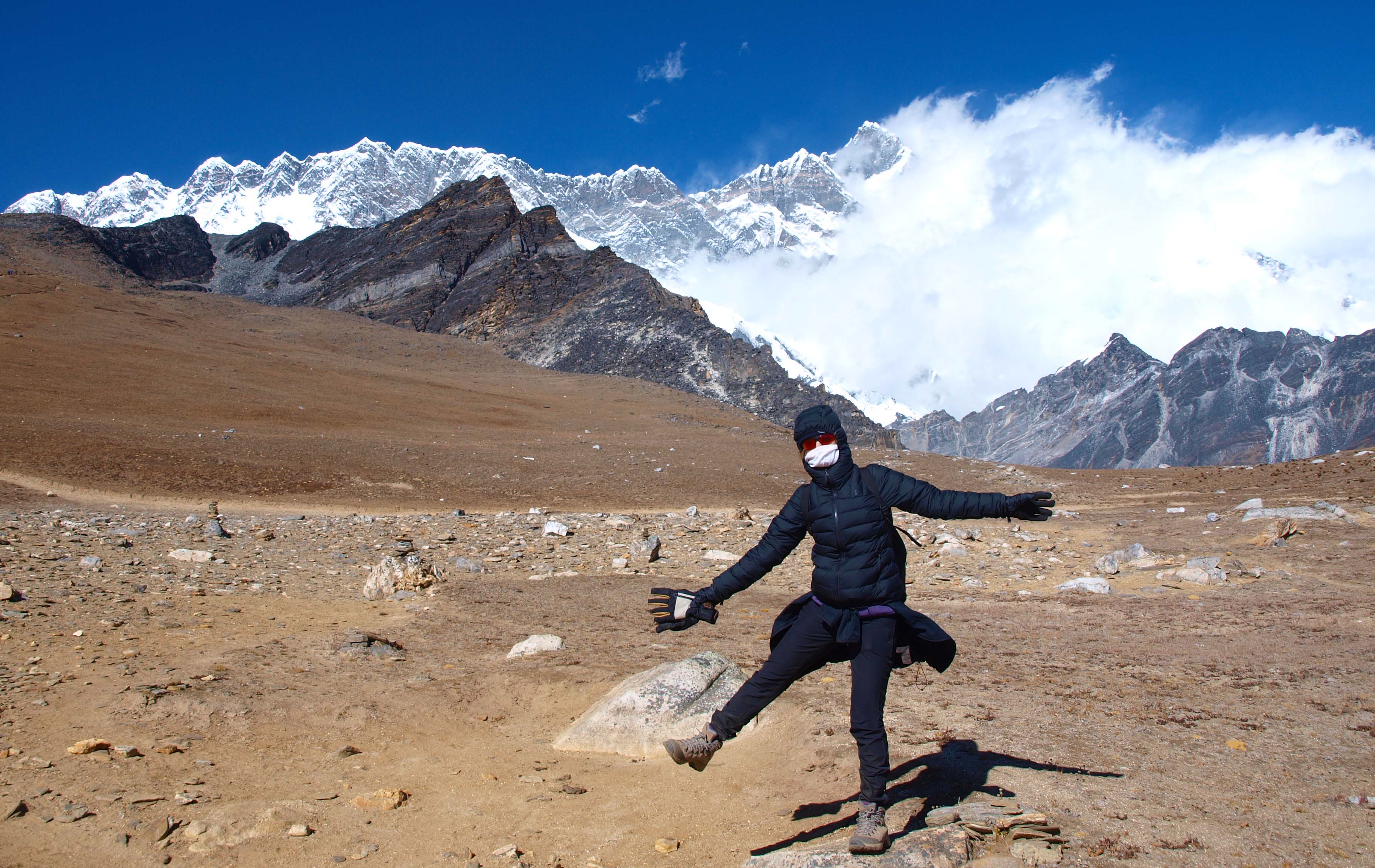
The first time I got the AMS headache I got worried and skipped the Ama Dablam Base Camp side trek on our Day Six trekking from Tengboche to Pangboche, but I had no idea at that point how much worse that headache will get during our trip. This post is for sharing my experience with AMS in the High Himalayas. I really hope you find it useful, but also please remember that this is just my personal experience. My husband had no headaches (just super minor ones) but he had lots of trouble sleeping, I had the opposite, so everyone is different.
What is Altitude Sickness?
Acute Mountain Sickness (AMS), also known as altitude sickness is essentially your body’s way of telling you that you are gaining altitude too quickly and your body does not have enough time to acclimatize to the thinning air at higher elevations. One can start experiencing Altitude Sickness at elevations above 2,500 to 3,000 meters (or as low as 1,500 m), where the decreased amount of oxygen in the air can have negative effects on your body. A headache is usually the first symptom, but it can also mean dehydration.
Types of Altitude Sickness:
There are three main types of mountain sickness caused by the higher air pressure and lower oxygen levels in the air at higher altitudes:
1. Acute Mountain Sickness (AMS) – the mildest version of altitude sickness. Symptoms will usually be present after 12 to 14 hours after being exposed to higher altitudes. With proper acclimatization, the symptoms should go away within a day or two.
2. High Altitude Pulmonary Edema (HAPE) – this is a progression from the Acute Mountain Sickness, which is why it is very important to keep an eye on how you are feeling at all times. HAPE is a buildup of fluid in the lungs and can be very dangerous to one’s health. It is usually recognized by shortness of breath, cough, chest tightness and congestion, crackles and wheezes. You can learn more on HAPE here.
3. High Altitude Cerebral Edema (HACE) – is the worst and most life-threatening case of altitude sickness and it happens when there’s fluid buildup in the brain. HACE symptoms include disorientation, lethargy, nausea,
Although most hikers will experience only the mild symptoms of altitude sickness, it is very important to pay attention to your body. Generally speaking, mild AMS symptoms should go away with medication, and/or go away on their own within a day as your body acclimatizes to the increased altitudes (given you give it enough time). However, if instead of feeling better one starts to get worse, this is an immediate sign for concern and emergency evacuation may be required. Below is a list of the mild AMS symptoms, most hikers will develop is ascending to higher altitudes quickly.
Altitude Sickness Symptoms
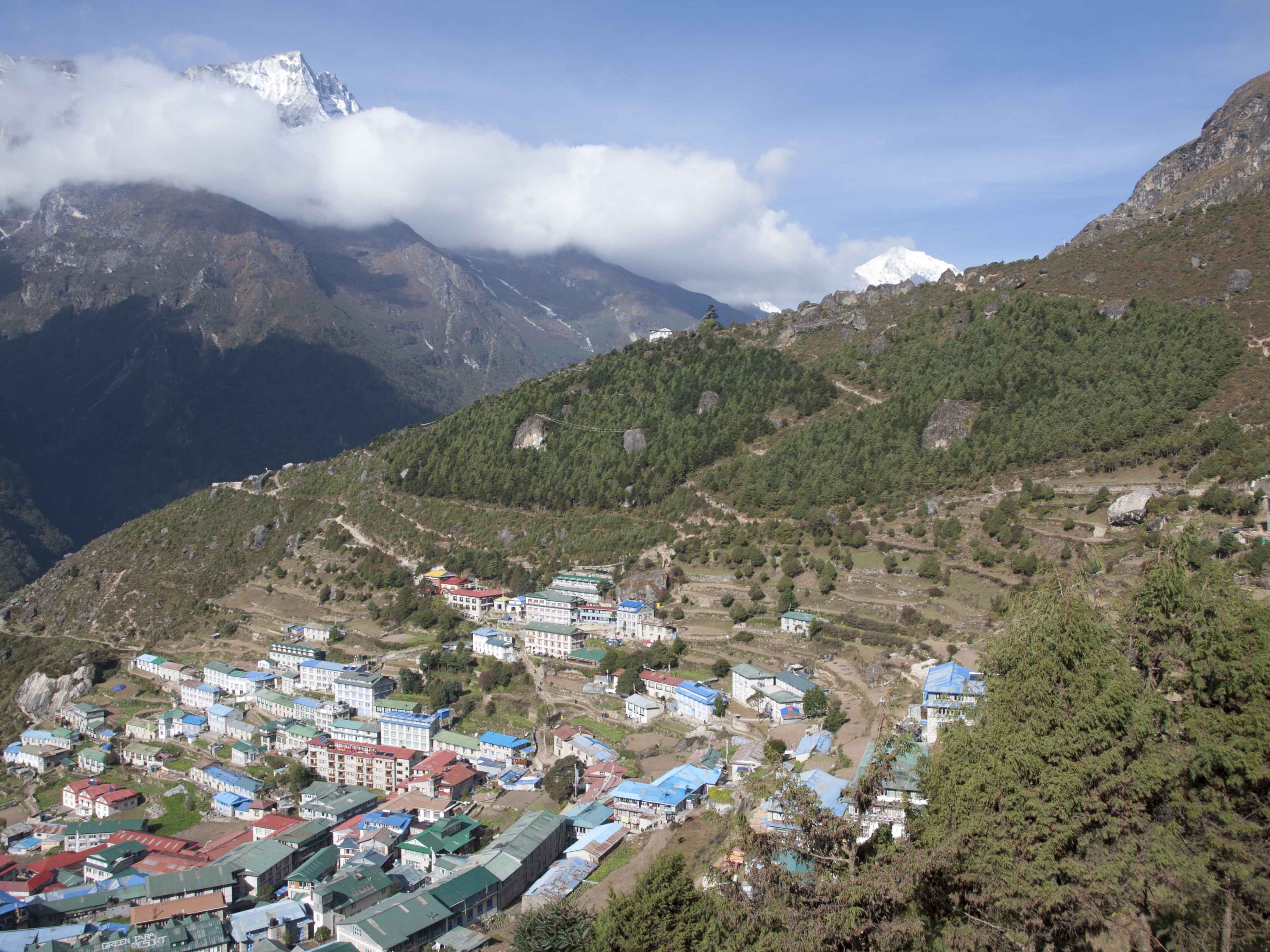
>Headache
>Dizziness
>Nausea
>Vomiting
>Fatigue and loss of energy
>Shortness of breath
>Loss of appetite
>Problems with sleep
>Swelling of face and or limbs
Altitude Sickness Symptoms I Got
Once we reached above 3,500 elevation I was “blessed” with a number of Altitude Sickness symptoms. My symptoms included:
1.Headaches: My headaches started above 3,000 meters and stayed throughout the journey getting worse as we climbed higher. I only acclimatized before we went up to Kala Patthar and Everest Base Camp, and I felt great on those hikes and all the way to Lukla.
Travel Tip: No one mentions it but somehow the headache is worse on the way down. We met a number of people who also noticed that. I would hypothesize that when you are going up you are careful and slow but on the way down many usually rush and that is causing the symptoms to worsen.
What it feels like: The worst headache I’ve ever had was after the Kongma La pass (5,528 m) and it started when we finally got to the village. Unlike a migraine pain, the headache I had was not felt in one spot, instead, I felt it all over my head, in the back, the sides, behind the eyes, and the top. It felt like my brain was swelling and pushing against my skull and all I wanted to do at that moment was to jump in an ice cold bath and sit there until it goes away.
I took a 400 mg ibuprofen and in about 20 minutes (which to me seemed like forever) the headache eased up to a manageable pain level. There was no debating whether we should ascend higher at that point, we stayed an extra day and walked to see the Pyramid. For the rest of the trek, at the first sign of a headache, I took half an Advil (200 mg ibuprofen) and it worked like magic.
How do you know it’s severe: Based on a number of sources about AMS headaches online, it seems like if an ibuprofen works, you just need to rest and acclimatize but no need for an evacuation. If it doesn’t then it’s bad.
Travel Tip: A few sources suggest that if taking Diamox, it is advised to consult with your doctor if you want to use Aspirin to treat headaches and other symptoms. According to this site, the side effects of combining those two medications include headaches, dizziness, vomiting,
2. Loss of appetite: I only had this symptom for a few days at the start of the hike and again in combination with the bad AMS headaches. Despite strenuous daily hikes, I did not feel hungry one bit at the end of the day However, this was not my biggest concern, it’s nausea that I felt pretty regularly that caused me to lose three kg upon return.
What it feels like: You simply don’t feel like you are hungry or thirsty at the end of a very tough hike.
3. Nausea: Oh this symptom was my companion for almost the whole trip…And this one sucks because the food is amazing at every tea house. I don’t know if it’s the elevation or just that they cook so well. Thankfully, for the last five days of the trek I finally fully acclimatized and ate breakfast, lunch, dinner and snacks in between. If you see fries (or chips they call them) on the menu, I highly recommend those hot french fries with ketchup.
What it feels like: Every morning and evening, despite feeling like I am starving, I could not eat more than a few bites of bread or a few spoons of rice, and that after a long day hike with a heavy backpack. Knowing that it is important to stay hydrated and eat carbs, I did force myself but never to the point to finish my plate.
4. Swelling: I didn’t pay much attention to this one because I always get it when I go hiking at elevation. My hands and face swell up a little, but other than the appearance of chubbier fingers, this is not causing much discomfort.
What it feels like: You don’t really notice it until you look at yourself in the mirror. 🙂 I’d take this one any time over the rest. 🙂
5. Sleep Disturbances: My husband has an issue sleeping almost every night, and we are not sure if this was caused by Diamox (it is one of the side effects) or the altitude sickness. I,
What it feels like: No idea, but I guess you just can’t fall asleep.
6. Shortness of Breath: I guess at some point during our trek I felt it all. Both my husband and I experienced shortness of breath at one point or another, but I remember one moment very clearly as I got pretty freaked out at this phenomenon: we started trekking early in the morning with our heavy backpacks and sort of had a rushed start to the walk, this is where I felt like I was not having enough air to keep going.
What it feels like: Feels like you ran ten kilometers after walking up a few steps but you get used to that feeling. However, if you push yourself as I did at some point, it feels like you are suffocating, which is pretty scary. The good news is that it all gets back to normal once you stop and catch your breath.
How to Prevent Altitude Sickness
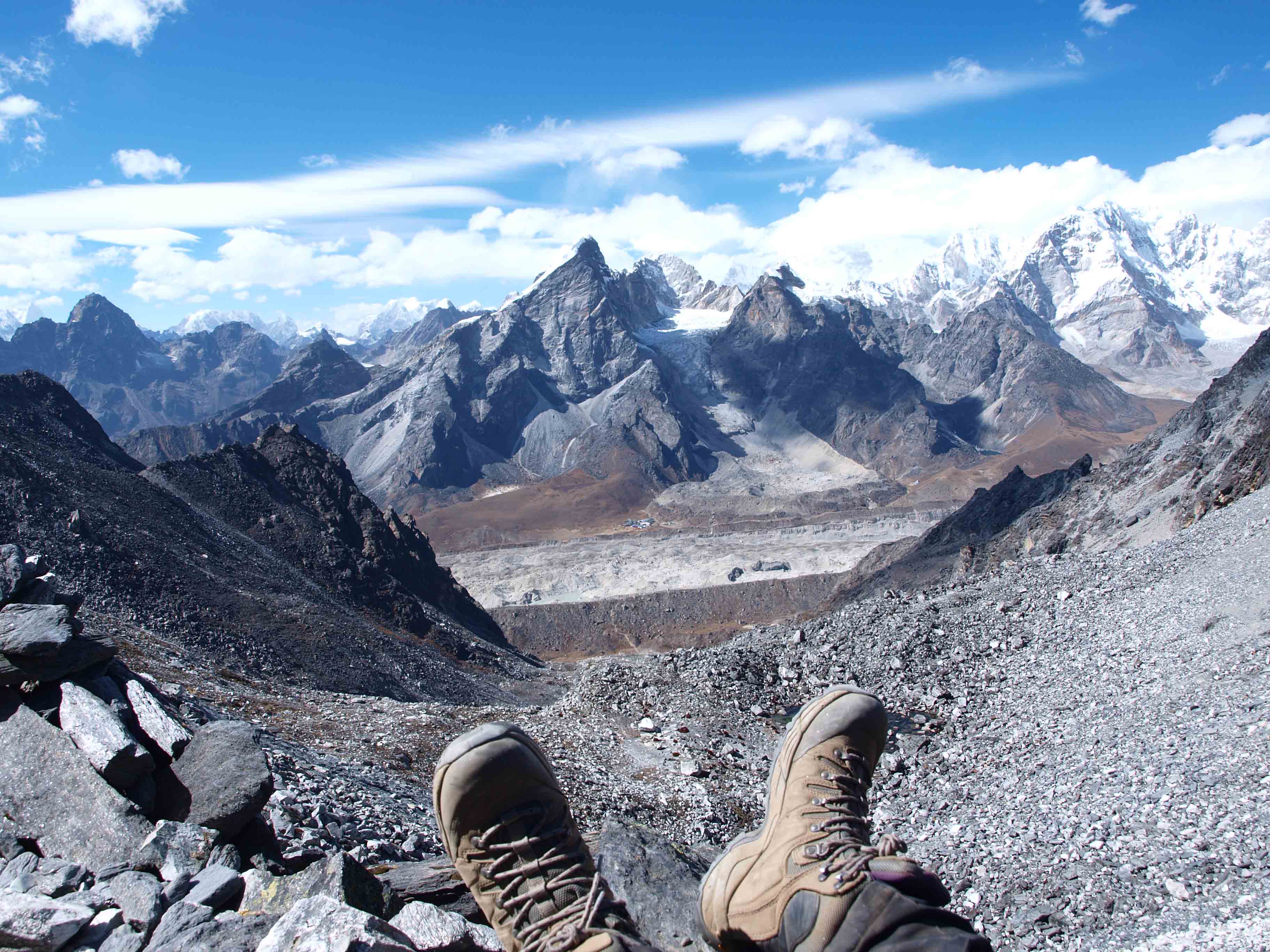
The best way is really to just take your time. Unfortunately, most of us don’t have a month to take off to travel in the Everest Region so we have to rush up to see as much as possible. We took Diamox preventatively to help us adjust to the altitude quicker (we had 17 days for a 22-day hike), and we rushed to see a lot of places but safely, however, I still suffered from a number of AMS symptoms. So here are a few ways you can prevent AMS:
1. Ascend gradually. The general rule is no more than 300 meters (or 1000 feet) in a day, and no more than 900 meters (or about 3000 feet) every three days. So schedule a rest day. This is a guideline though, so go by your overall feeling.
2. Sleep low. Whenever you ascend higher always plan to sleep lower.
3. Avoid alcohol. Alcohol will dehydrate you and dehydration is one of the main causes of altitude sickness, so stay safe and only drink when you are in Namche or on your descent but definitely avoid a cold one on your way up.
4. Pack Light. Heavy weight will exhaust you and that won’t help your body acclimatize quickly, so try to pack light so that not only you acclimatize quicker but also make your trek more enjoyable.
5. Drink lots of fluids. You should try to drink constantly, so about three liters a day. As you climb higher you won’t feel like you’re thirsty, which is why it’s important to make sure you drink enough fluids. And don’t avoid drinking because there are no washrooms, you’ll just have to find a hiding spot.
6. Eat Safe. Avoid meat and anything that’s not 100% cooked. The last thing you want is food poisoning or travelers diarrhea.
Would I Do it Again?
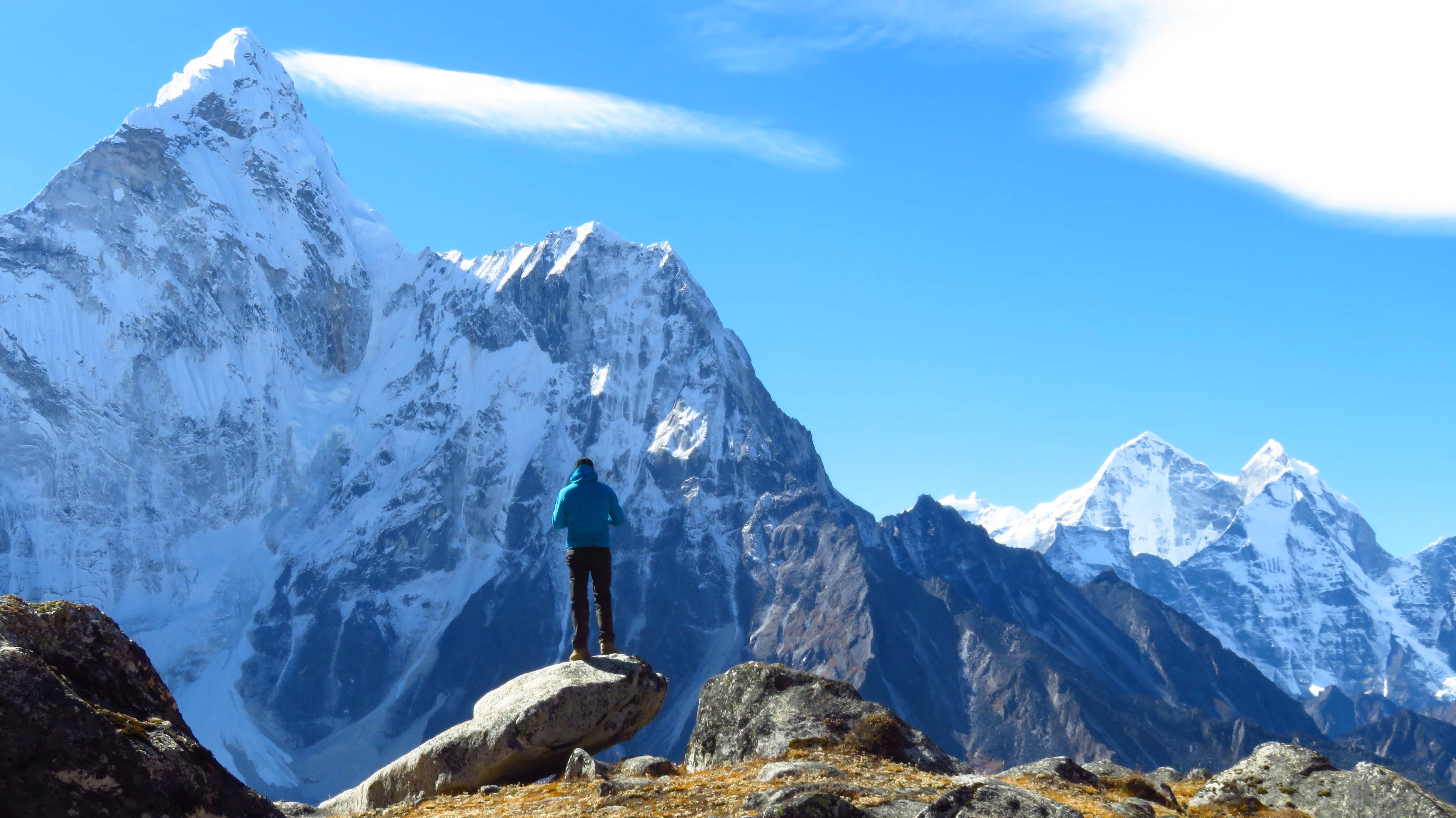
Selective memory is a funny thing. While writing this post I revisited all the experiences of the altitude sickness and I got to admit, they were not pleasant. In summary, I dealt with a headache, nausea, weakness, and shortness of breath for almost the whole way up and only fully acclimatized towards the end of the trek. But despite all this discomfort, I would do it all again in a heartbeat.
I will never get tired of repeating that the Three Passes Trek my husband and I chose as our honeymoon destination is the best travel decision we’ve ever made… It was the most challenging trek I’ve ever done, but it is also the most impressive, beautiful, and magical trek we’ve done. I wish we had more time when we went, but at the same time, all that means is that now we must come back and trek for longer and trek higher. If curious, you’ll find more info on our Three Passes Trek Honeymoon Post.
*Disclaimer: The information contained in this article is for educational purposes only and should not be used as a substitute for a consultation with a licensed physician. Please see your physician or a travel doctor for any diagnosis and recommendations prior to your trip.
Sources:
Altitude Sickness: https://www.webmd.com/a-to-z-guides/altitude-sickness
Acute Mountain Sickness: https://en.wikipedia.org/wiki/Altitude_sickness
Acetazolamide (Diamox): https://www.drugs.com/drug-interactions/aspirin-with-diamox-243-0-86-3180.html
Altitude Sickness Prevention: https://www.healthline.com/health/altitude-sickess-prevention#5



